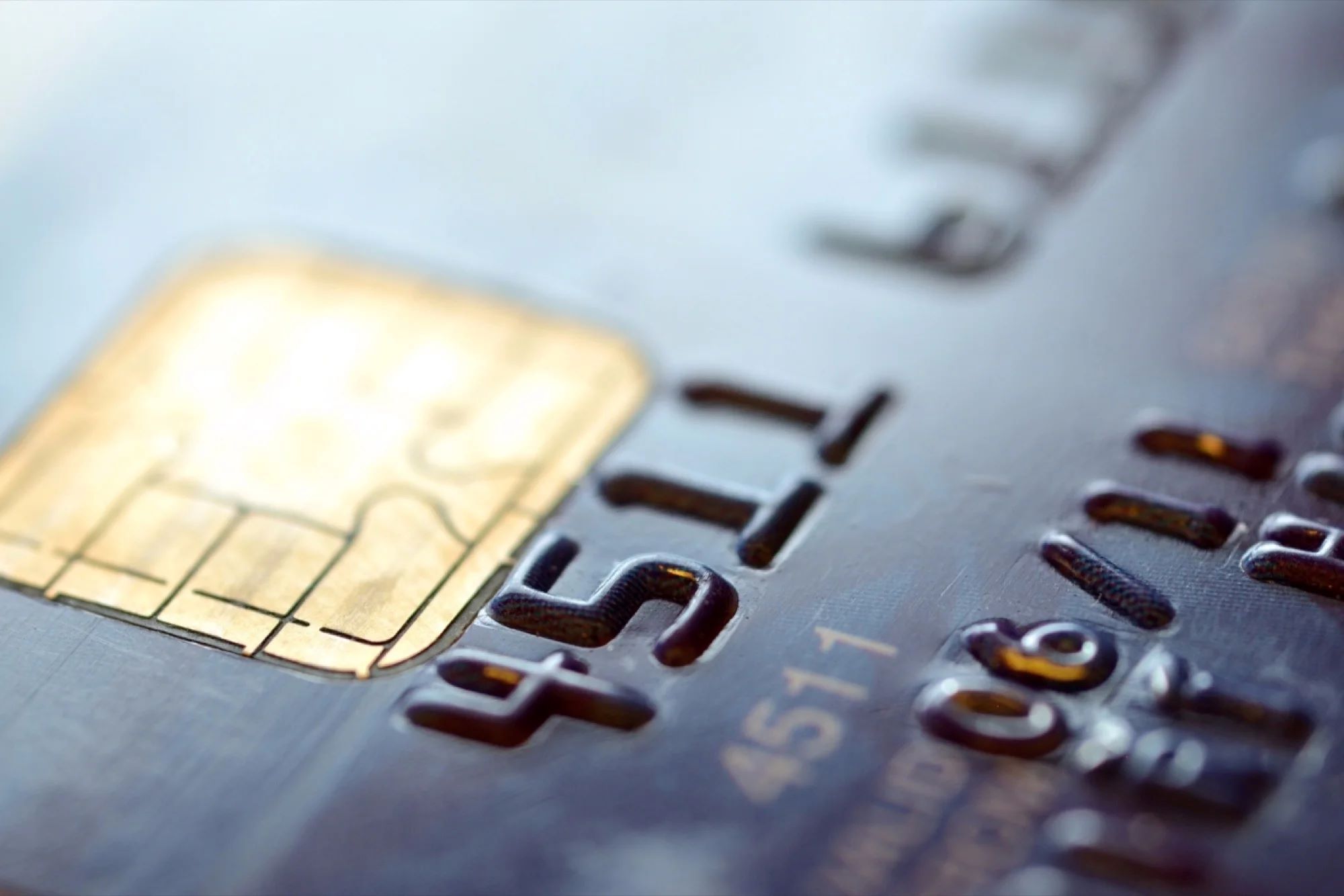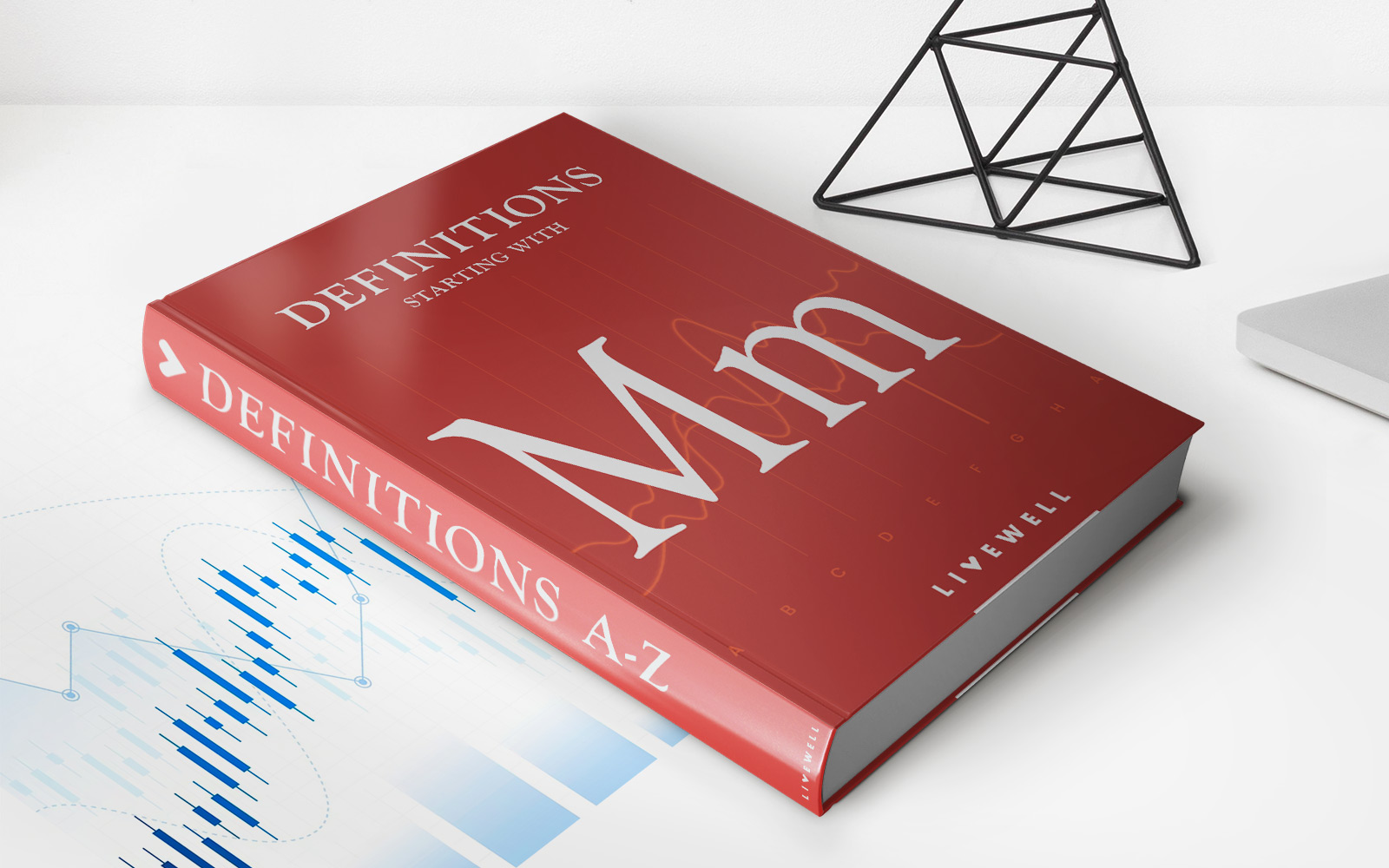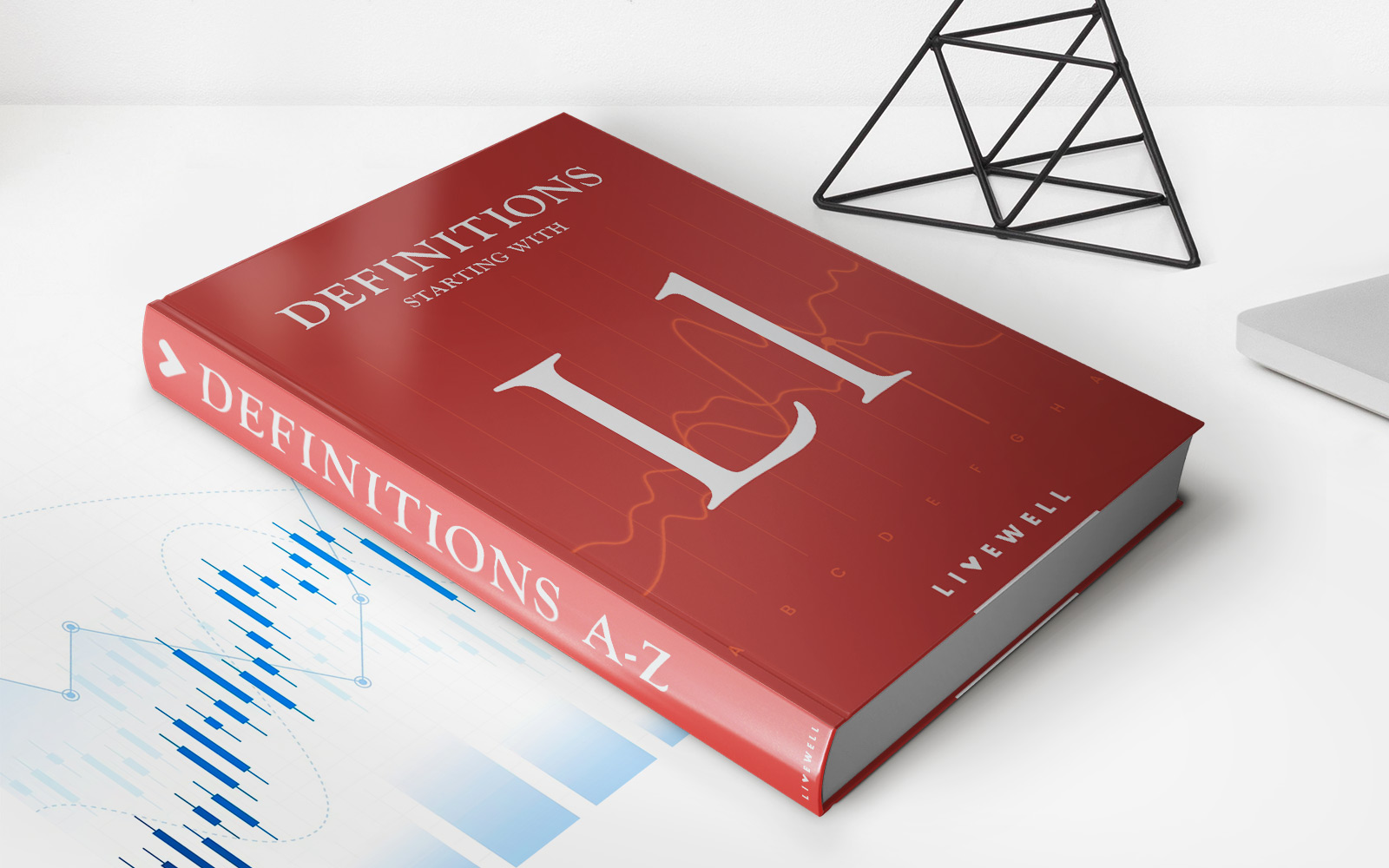

Finance
How Much Credit Card Debt Is Too Much
Published: October 24, 2023
Struggling with credit card debt? Find out how much is considered too much and get expert tips on managing your finances effectively.
(Many of the links in this article redirect to a specific reviewed product. Your purchase of these products through affiliate links helps to generate commission for LiveWell, at no extra cost. Learn more)
Table of Contents
Introduction
Welcome to the world of credit cards, where the allure of convenience and instant gratification often intersects with the potential danger of accumulating excessive debt. While credit cards can be a helpful financial tool, they can also lead to significant financial stress if not managed wisely. It is essential to understand the fine line between responsible credit card usage and burdening debt.
In this article, we will delve into the factors that determine how much credit card debt is too much. We will explore key considerations such as debt-to-income ratio, credit utilization ratio, and credit score impact. Additionally, we will discuss the risks and consequences associated with excessive credit card debt, as well as strategies for managing it effectively.
It is important to note that the ideal credit card debt level will vary depending on individual circumstances. What may be considered manageable for one person may be overwhelming for another. That being said, gaining a solid understanding of the factors involved can help you make informed decisions about your own credit card usage and debt management.
So, let’s dive in and explore how to find the balance between utilizing credit cards for your benefit while avoiding the pitfalls of accumulating too much debt.
Understanding Credit Card Debt
Credit card debt is the amount of money that you owe to credit card issuers based on your credit card transactions. When you make purchases using your credit card, you are essentially borrowing money from the credit card company. If you don’t pay off the full balance each month, you will accumulate credit card debt, which incurs interest charges.
One of the key features of credit card debt is that it is considered revolving debt. Unlike installment loans, where you borrow a fixed amount and repay it in installments over a specific period, credit card debt can carry over from month to month, allowing you to continually borrow and repay as long as you stay within your credit limit.
Credit card debt often comes with high interest rates, which can contribute to its rapid growth if not managed properly. It is crucial to understand the terms and conditions of your credit card agreement, including the interest rates, fees, and payment policies.
One factor that separates credit card debt from other types of debt is the flexibility of payment. Credit card issuers typically require a minimum payment each month, which is a percentage of the outstanding balance. However, paying only the minimum amount can prolong your debt repayment and result in a significant amount spent on interest over time.
It is essential to recognize that credit card debt should not be treated as free money or an extension of your income. Each purchase made with a credit card adds to your overall debt burden. To achieve financial stability and avoid excessive debt, responsible credit card usage and diligent debt management are crucial.
Factors to Consider
When determining whether your credit card debt is too much, several key factors should be taken into account. These factors can help you assess your overall financial health and gauge the level of debt that is manageable for your specific circumstances. Let’s explore some of the important considerations:
- Debt-to-Income Ratio: Your debt-to-income ratio is a measure of how much of your income goes towards paying off debt each month. To calculate it, simply divide your total monthly debt payments by your monthly income. A high debt-to-income ratio indicates that a significant portion of your income is already allocated towards debt obligations, potentially making it harder to manage additional credit card debt.
- Credit Utilization Ratio: This ratio is the percentage of your available credit that you are using. To calculate it, divide your credit card balances by your credit limit and multiply by 100. For example, if you have a credit limit of $10,000 and your balance is $3,000, your credit utilization ratio is 30%. High credit utilization can negatively impact your credit score and may suggest that you are relying too heavily on credit.
- Credit Score Impact: Accumulating excessive credit card debt can adversely affect your credit score. Your credit utilization ratio, payment history, and overall debt level are some of the factors that credit bureaus consider when calculating your credit score. Maintaining a low level of credit card debt can help preserve a good credit score, which is essential for future borrowing needs and financial opportunities.
- Risks and Consequences: It is important to consider the potential risks and consequences associated with high credit card debt. These can include interest charges, late payment fees, penalties, and even damage to your credit history. Additionally, excessive credit card debt can contribute to financial stress, making it difficult to achieve your long-term financial goals.
While these factors provide valuable insight, it is essential to remember that personal circumstances can vary. What may be considered manageable for one individual may be challenging for another. It is crucial to assess your financial situation holistically and develop a clear understanding of your spending habits, income, and overall financial goals.
Now that we have examined the key factors to consider, let’s delve deeper into how to determine how much credit card debt is too much and explore strategies for managing it effectively.
Debt-to-Income Ratio
One crucial factor to consider when assessing the level of credit card debt is your debt-to-income ratio. This ratio measures the percentage of your monthly income that goes towards paying off debt. It gives you an idea of your overall debt burden and whether adding more credit card debt would be manageable.
To calculate your debt-to-income ratio, you need to add up all your monthly debt payments, including credit card payments, loan payments, and any other outstanding debts. Once you have the total monthly debt payments, divide it by your gross monthly income (before taxes and deductions). Multiply the result by 100 to get the percentage.
For example, if your total monthly debt payments amount to $1,500 and your gross monthly income is $5,000, your debt-to-income ratio would be 30% (1,500/5,000 x 100).
A high debt-to-income ratio indicates that a significant portion of your income is already allocated towards debt repayment. This can be a sign that you are financially overextended and may struggle to manage additional credit card debt. In such cases, adding more debt can strain your budget and make it challenging to meet other financial obligations or save for emergencies.
Generally, a debt-to-income ratio of 36% or lower is considered optimal by lenders. However, the ideal ratio can vary depending on individual circumstances, such as your income stability and other financial obligations.
If your debt-to-income ratio exceeds 36%, it may be wise to reevaluate your financial situation and consider strategies to reduce your overall debt burden. This could involve paying down existing debts, cutting back on expenses, or seeking additional income sources to improve the ratio.
Ultimately, understanding and managing your debt-to-income ratio is crucial for maintaining a healthy financial lifestyle. By keeping your debt-to-income ratio within a reasonable range, you can ensure that you are not placing undue strain on your finances and have the flexibility to handle unexpected expenses or pursue financial goals.
Credit Utilization Ratio
The credit utilization ratio is a key factor to consider when evaluating your credit card debt. It is the percentage of your available credit that you are currently using. A high credit utilization ratio can have a negative impact on your credit score and may indicate that you are relying too heavily on credit.
To calculate your credit utilization ratio, divide your total credit card balances by your total available credit and multiply by 100. For example, if you have a total credit card balance of $3,000 and a total credit limit of $10,000, your credit utilization ratio would be 30% (3,000/10,000 x 100).
Having a high credit utilization ratio, typically above 30%, can signal to lenders that you are using a significant portion of your available credit and may be at higher risk of defaulting on your debts. This can have a negative impact on your credit score, as credit utilization ratio accounts for approximately 30% of your FICO credit score.
It is generally advised to maintain a credit utilization ratio below 30% to maximize your credit score. However, the lower the ratio, the better. A lower ratio demonstrates responsible credit management and portrays you as a lower risk borrower to lenders.
If your credit utilization ratio is high, there are a few strategies you can consider to improve it:
- Pay down existing balances: By reducing the amount you owe on your credit cards, you can lower your credit utilization ratio. Make a plan to pay off balances aggressively, starting with high-interest cards first.
- Request a credit limit increase: If you maintain good credit and have a positive relationship with your credit card issuer, you may be able to request a credit limit increase. This can help lower your credit utilization ratio, as long as you don’t increase your spending.
- Consider opening a new credit card: Utilizing another credit card can increase your available credit, thus lowering your credit utilization ratio. However, exercise caution, as opening too many new credit accounts in a short period can negatively impact your credit score.
Maintaining a low credit utilization ratio is key to managing credit card debt effectively and maintaining a healthy credit profile. By being mindful of your ratio and employing strategies to keep it low, you can improve your creditworthiness and financial stability.
Credit Score Impact
Your credit score is a numerical representation of your creditworthiness and is used by lenders to assess your creditworthiness when you apply for loans or credit. Accumulating excessive credit card debt can have a significant impact on your credit score.
One of the key factors that affect your credit score is your credit utilization ratio, which is the percentage of your available credit that you are currently utilizing. A high credit utilization ratio can negatively impact your credit score, as it may suggest that you are relying too heavily on credit and may be at a higher risk of defaulting on your debts.
In addition to credit utilization ratio, credit card debt can impact your credit score through other factors such as:
- Payment history: Late or missed payments on credit card debt can significantly impact your credit score. Consistently making on-time payments is crucial for maintaining a good credit score.
- Debt level: The total amount of debt, including credit card debt, is taken into consideration when calculating your credit score. Carrying high levels of debt can have a negative impact on your credit score.
- Length of credit history: The length of time you have had credit accounts, including credit cards, can affect your credit score. Having a long credit history demonstrates your ability to manage credit responsibly.
- New credit inquiries: Opening multiple credit card accounts or applying for new credit cards within a short period can lower your credit score. It is important to be mindful of the number of credit inquiries you generate.
It is essential to note that a poor credit score can have far-reaching consequences beyond just the ability to secure credit. It can affect your ability to obtain favorable interest rates on loans, rent an apartment, or even be considered for certain job opportunities. Therefore, protecting and improving your credit score should be a priority.
To minimize the impact of credit card debt on your credit score, focus on:
- Maintaining a low credit utilization ratio by keeping credit card balances as low as possible.
- Consistently paying your credit card bills on time and in full.
- Avoiding opening too many new credit accounts within a short period.
- Regularly monitoring your credit report for errors or discrepancies.
Improving your credit score takes time and discipline, but it is achievable. By managing your credit card debt responsibly and focusing on maintaining a good credit score, you can enhance your financial well-being and open up opportunities for better borrowing terms in the future.
Risks and Consequences
Accumulating excessive credit card debt can have severe risks and consequences that can impact your financial well-being. It is essential to be aware of these risks and take steps to avoid them:
- High-interest charges: Credit card debt often comes with high interest rates. The longer you carry a balance on your credit card, the more interest you will accumulate. This can result in significant interest charges over time, making it harder to pay off your debt.
- Financial stress: Excessive credit card debt can lead to financial stress and anxiety. The burden of debt can weigh heavily on your mind and impact your overall well-being. It can hinder your ability to save for emergencies, reach your financial goals, and enjoy a stress-free life.
- Negative impact on credit score: As mentioned earlier, high credit card debt can harm your credit score. A lower credit score can affect your ability to qualify for loans, secure favorable interest rates, or even rent an apartment. It can also limit your financial options and opportunities.
- Difficulty in achieving financial goals: Excessive credit card debt can derail your progress towards achieving your financial goals. It can consume a significant portion of your income, leaving less money available for saving, investing, or pursuing other important goals like homeownership or retirement.
- Collection efforts and legal consequences: If you fail to make payments on your credit card debt, the credit card issuer may resort to collection efforts. This can involve contacting you for payment, reporting the delinquency to credit bureaus, and potentially taking legal action to recover the debt.
Understanding the risks and consequences of excessive credit card debt is crucial to motivate responsible financial behavior. It is wise to evaluate your spending habits, create a budget, and develop a plan to pay off your credit card debt to avoid these potential hazards.
By taking proactive steps to manage and reduce your credit card debt, you can mitigate these risks, alleviate financial stress, and position yourself for a more stable and secure financial future.
Determining How Much is Too Much
Determining how much credit card debt is too much is a highly individualized decision that depends on various factors such as income, expenses, financial goals, and risk tolerance. However, there are a few guidelines you can consider to help you gauge whether your credit card debt is becoming unmanageable:
- Debt-to-income ratio: Evaluate your debt-to-income ratio, as discussed earlier. If a significant portion of your income is already allocated towards debt payments, it may be an indication that you have taken on too much credit card debt.
- Budget analysis: Assess your monthly budget and determine how much of your income is going towards credit card debt repayment. If it leaves little room for savings or other financial goals, it may be a sign that your credit card debt is excessive.
- Financial goals: Consider whether your credit card debt is hindering your progress towards achieving your financial goals. If you are unable to save for emergencies, invest for the future, or meet other important financial milestones, it could be a sign that your debt level is too high.
- Stress and emotional well-being: Reflect on how your credit card debt makes you feel. If it causes significant stress, anxiety, or disrupts your emotional well-being, it may indicate that your debt burden is becoming unmanageable.
Additionally, it is crucial to be aware of the warning signs that your credit card debt is spiraling out of control, such as consistently making only the minimum payments, relying on credit cards to cover basic living expenses, or frequently exceeding your credit limits.
Remember that responsible credit card usage involves borrowing only what you can afford to repay comfortably. While credit cards can provide convenience and flexibility, it is important to use them wisely and within your means to avoid excessive debt.
If you find that your credit card debt is becoming overwhelming, it may be time to reassess your financial situation, develop a budgeting plan, and explore strategies to reduce your debt. Taking control of your credit card debt can help you regain financial stability and work towards achieving your long-term financial goals.
Strategies for Managing Credit Card Debt
Managing credit card debt effectively is essential for maintaining financial stability and achieving your financial goals. Here are some strategies to help you take control of your credit card debt:
- Create a budget: Start by creating a comprehensive budget that outlines your income and expenses. Allocate a specific amount towards credit card debt repayment each month and prioritize making more than the minimum payment to accelerate your progress.
- Pay more than the minimum: Whenever possible, pay more than the minimum payment required. By paying more, you can reduce the principal balance owed and save on interest charges over time.
- Consolidate your debt: If you have multiple credit card debts, consider consolidating them into a single loan or transferring balances to a card with a lower interest rate. This can simplify repayment and potentially save money on interest.
- Focus on one debt at a time: If you have multiple credit cards with balances, consider using the debt avalanche or debt snowball method. With the debt avalanche method, focus on paying off the debt with the highest interest rate first, while the debt snowball method involves paying off the smallest debt first to gain momentum.
- Reduce expenses: Look for opportunities to cut back on expenses and redirect those savings towards your credit card debt. This could involve eliminating non-essential purchases, renegotiating bills, or finding creative ways to save money.
- Generate additional income: Explore ways to increase your income, such as taking on a side gig or freelance work. The extra income can be allocated towards paying off your credit card debt more quickly.
- Negotiate with credit card companies: Reach out to your credit card companies to negotiate lower interest rates or more favorable repayment terms. They may be willing to work with you to develop a repayment plan that suits your financial situation.
- Seek credit counseling: If you find it challenging to manage your credit card debt on your own, consider seeking assistance from a reputable credit counseling agency. They can provide guidance, negotiate with creditors on your behalf, and help you develop a tailored debt repayment plan.
Remember, managing credit card debt requires discipline and commitment. By implementing these strategies and staying consistent, you can gradually reduce your credit card debt and improve your financial well-being.
Seeking Professional Help
For individuals grappling with overwhelming credit card debt, seeking professional help can provide valuable guidance and support in managing and resolving the debt. Here are some avenues to consider:
- Credit counseling: Credit counseling agencies offer expert advice and assistance in creating a personalized plan to manage your credit card debt. They can help you develop a budget, negotiate with creditors, and provide educational resources to improve your financial literacy. Be sure to choose a reputable agency that is accredited by organizations such as the National Foundation for Credit Counseling (NFCC).
- Debt settlement: If your credit card debt has become unmanageable and your financial situation allows, you may consider working with a debt settlement company. These companies negotiate with creditors on your behalf to settle your debts for less than the total amount owed. However, it’s important to carefully weigh the risks and potential impact on your credit score before pursuing this option.
- Debt management plan (DMP): A DMP is a formal arrangement between you and your creditors to help repay your debts more efficiently. Credit counseling agencies often facilitate DMPs, allowing you to make consolidated payments to the agency, which in turn distributes the funds to your creditors. This can simplify your repayment process and potentially reduce interest rates and fees.
- Bankruptcy: While considered a last resort, bankruptcy can provide relief for individuals overwhelmed by debt. It is a legal process that can help eliminate or restructure your debts, providing a fresh financial start. However, bankruptcy has long-term consequences and should only be considered after consulting with a qualified bankruptcy attorney.
When seeking professional help, research and choose reputable organizations or professionals with a proven track record of assisting individuals with credit card debt. Be cautious of predatory individuals or companies that promise quick fixes or charge exorbitant fees.
Remember that seeking professional help does not absolve you of your responsibility to actively participate in the debt management process. It is crucial to stay informed, ask questions, and actively engage in the strategies and solutions proposed by the professionals to effectively address your credit card debt.
Ultimately, professional help can provide the expertise and support needed to navigate the complexities of credit card debt, develop a plan of action, and work towards a more secure financial future.
Conclusion
Managing credit card debt effectively is crucial for achieving financial stability and avoiding the pitfalls of excessive debt. While the ideal level of credit card debt may vary for each individual, it is essential to understand the factors that determine when debt becomes unmanageable.
Factors such as debt-to-income ratio, credit utilization ratio, credit score impact, and the associated risks and consequences can guide your assessment of your credit card debt level. By considering these factors, you can make informed decisions about your credit card usage and debt management strategies.
To manage credit card debt responsibly, it’s important to create a budget, pay more than the minimum, consolidate debt if necessary, and focus on one debt at a time. Reducing expenses, generating additional income, and seeking professional help when needed are also effective strategies to regain control over credit card debt.
Remember, excessive credit card debt can impact your financial well-being, credit score, and long-term financial goals. By practicing responsible credit card usage, regularly evaluating your financial situation, and taking proactive measures to manage and reduce your debt, you can pave the way towards a more sustainable and secure financial future.
Ultimately, finding the right balance between using credit cards to your advantage and avoiding excessive debt is key. With careful consideration, financial discipline, and a commitment to ongoing debt management, you can navigate the world of credit cards with confidence and achieve your financial objectives.














